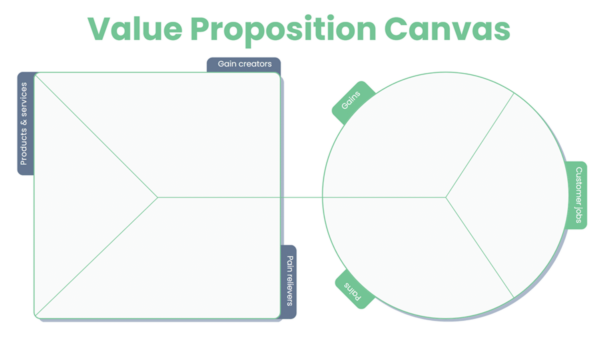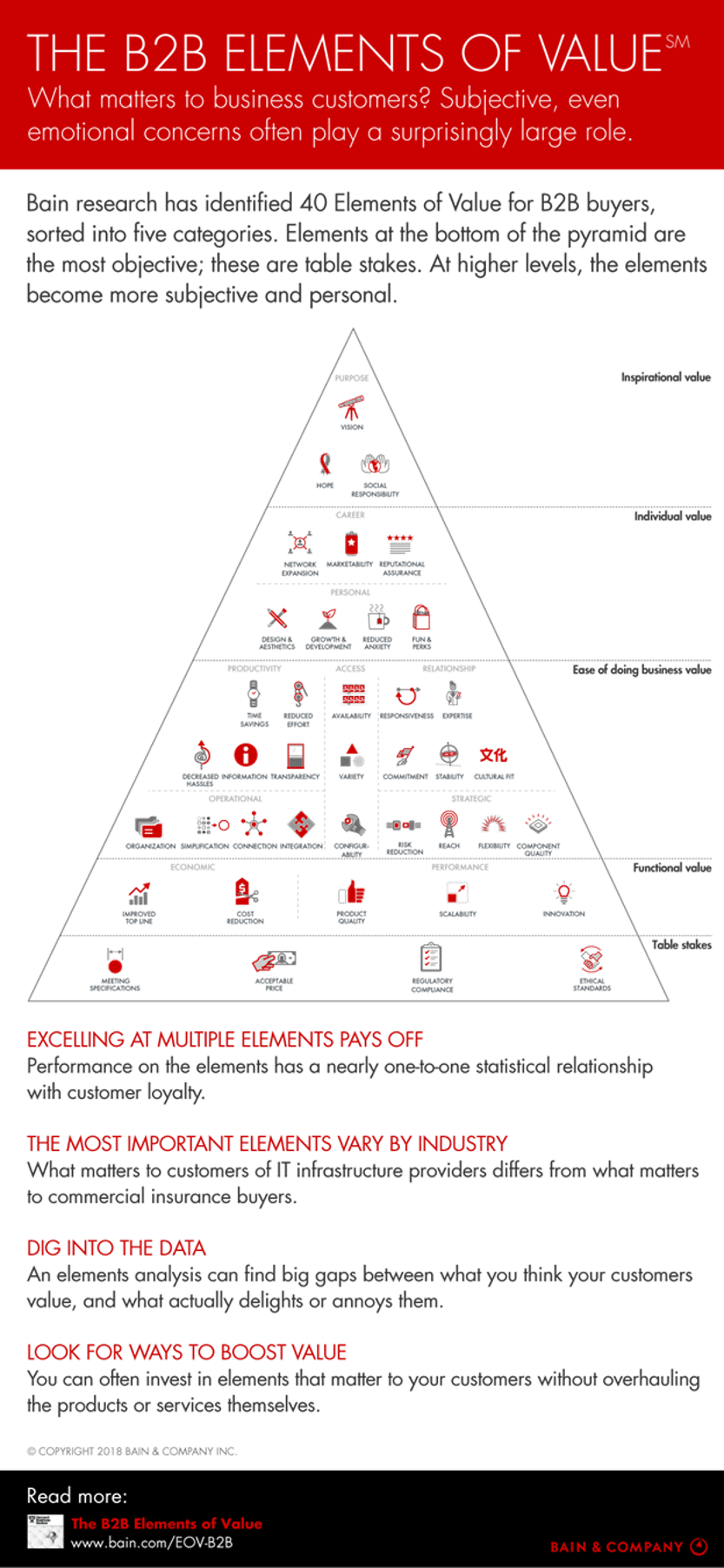SaaS value propositions are concise statements that explain how software solves customer problems, delivers benefits, and outperforms competitors. A strong value proposition focuses on both what the product does and how it creates meaningful outcomes for users. Well-crafted, they cut through the noise in a competitive market.
Category Positioning vs. Use Case Positioning
When writing SaaS value propositions, the first choice a marketer must make is whether to opt for category positioning or use case positioning. Consider each:
Category positioning involves placing your SaaS within a familiar product category, like “CRM” or “marketing automation platform.” This method helps customers immediately understand the product’s nature and how it compares to competitors. For instance, Figma positions itself as a “collaborative interface design tool,” a clear and concise description that has resonated with its target audience. The strength of category-based positioning lies in its clarity and simplicity. Customers who are familiar with the category can quickly grasp your product’s value and how it compares to alternatives.
In contrast, case positioning focuses on the specific activity or problem that your product solves, often bypassing traditional product categories. This approach is ideal when your SaaS product doesn’t fit neatly into an established category or when it’s tackling a niche problem. The level of specificity in use case positioning can vary. A broader use case like “managing team communication” reaches a larger audience, while a more focused one such as “reviewing mobile wireframes” appeals to a smaller, more targeted group. The key is to maximize the impact of your messaging by finding the sweet spot between specificity and market size.
3 Essential Steps for Better SaaS Value Propositions
1. Answer Essential Questions
All SaaS value propositions must clearly and concisely answer four questions:
- What is it?
Your SaaS needs to fit either into an easily recognizable category (e.g., CRM, project management tool) or be defined by a clear use case (e.g., a tool for automating email follow-ups) as discussed above. The answer to this question should help customers instantly understand what your product does and why it matters. - Who is it for?
Tailor SaaS value propositions by segmenting your audience and targeting your SaaS buyer personas. Are you targeting small businesses, enterprises, or a specific department within an organization? For instance, your SaaS might be ideal for HR teams looking to streamline onboarding processes. - What does it replace?
Articulating what your product replaces helps customers visualize the immediate benefits of switching to your SaaS. This might be a manual process, an outdated software tool, or a disorganized workflow. - Why is it better?
Focus on differentiators that competitors cannot claim. Is your SaaS faster, more user-friendly, or more affordable? Highlight how it directly addresses pain points better than alternatives. For example, if your tool reduces time spent on manual data entry by 80%, lead with that benefit, rather than with a feature.
2. Craft a Compelling Message
Clarity and simplicity are critical. Avoid buzzwords and focus on the specific outcomes your product delivers instead. Rather than saying, “Our SaaS is AI-powered,” say, “Save 20% of your time with automated reporting.” Use bullet points and concise phrasing to ensure customers immediately understand your product’s value, especially on landing pages.
3. Test and Iterate for Success
Your value proposition should evolve as you gather customer feedback and market insights. Use A/B testing and customer interviews to refine your messaging, ensuring it resonates with your audience and addresses their pain points effectively. By continuously testing and improving, you can maintain a strong, relevant value proposition that drives growth.
Testing and validating your value proposition while seeking product-market fit will ensure that your product truly meets customer needs and resonates with your target audience. Through validation, you can confirm whether your value proposition aligns with what customers actually want, helping avoid wasted resources on a product that may not gain traction. Testing also allows you to refine your messaging, identify key benefits that attract and retain users, and understand what features or aspects of your offering may need adjustment. Ultimately, it helps you build a product that fits the market effectively, increasing the likelihood of customer adoption, loyalty, and long-term success.
Avoid Common Mistakes
It’s easy to go wrong when writing SaaS value propositions. Keep these common mistakes in mind and avid them:
- Overcomplicating your message: Keep your description simple and easy to understand.
- Focusing on features over benefits: Your value proposition should highlight how the product improves the user’s experience, not just list its features.
- Failing to update based on customer feedback: Regularly review and adapt your value proposition to ensure it stays aligned with customer needs.
4 Frameworks for Crafting SaaS Value Propositions
A compelling value proposition helps an organization differentiate itself and resonate with its target market. Various frameworks, such as Steve Blank’s Customer Development Model, Geoffrey Moore’s approach, the Value Proposition Canvas, and Bain’s B2B Elements of Value offer structured methods to understand what customers truly value and to communicate that effectively. These tools help businesses clarify their core benefits, address customer needs and pains, and strategically position their offerings. By leveraging these frameworks, companies can build value propositions that align closely with customer expectations, drive engagement, and enhance their competitive advantage.
Steve Blank’s Customer Development Model
Entrepreneur Steve Blank’s customer development approach refines SaaS value propositions. He recommends continuous customer discovery and validation, ensuring that your proposition remains aligned with market demands. By interviewing potential customers and incorporating feedback, you will refine your message to reflect real-world needs, improving both relevance and impact. Phrase your value proposition like this:
We help X do Y by doing Z
Moore’s Crossing the Chasm
Another useful approach is Geoffrey Moore’s value positioning statement. In his book Crossing the Chasm, Moore provides a formula that Fortune 500 companies often use to sharpen their unique value propositions (UVP) by clarifying industry, category, and specific value:
For (target customer) who (statement of the need or opportunity) our (product/service name) is (product category) that (statement of benefit).
Steve Blank’s formula is ideal for crafting a catchy headline, while Moore’s approach can help highlight core benefits in a subheading. Bear in mind, however, that these templates are simply starting points. Use them to clearly express your value proposition and inspire new ideas.
Value Proposition Canvas
The Value Proposition Canvas is a tool designed to help businesses make sure their product or service meets what their customers truly need and value. Created by Dr. Alexander Osterwalder, it zooms in on two essential parts of a business model – understanding customers and designing a value proposition that resonates with them.
The canvas has two main parts:
Customer Profile: This section captures a deep understanding of the target customer segment.
- Jobs: What are the main tasks, problems, or goals the customer is trying to accomplish? These can be functional tasks (like getting from point A to B), social needs (fitting in with a peer group), or emotional desires (feeling successful).
- Pains: What frustrates the customer? These are the negative emotions, obstacles, or risks they encounter trying to get their “jobs” done.
- Gains: What benefits or outcomes would delight the customer? This includes things they need, expect, or would surprise them positively.
Each segment of customers may have different jobs, pains, and gains, so it’s essential to create a customer profile for each group.
Value Map: This part describes how your product or service helps address the customer’s needs.
- Pain Relievers: How does your product reduce or eliminate customer pains?
- Gain Creators: How does your product add benefits or make the customer experience better?
- Products and Services: What specific offerings provide these pain relievers and gain creators?
To make sure the value proposition truly resonates, you must align (or achieve a “fit”) between what customers care about most and what your product offers. This happens when your pain relievers and gain creators effectively address the most important pains and gains identified in the customer profile.

The Bain B2B Elements of Value Framework
The B2B Value Framework offers a structured way to present your value proposition in a B2B context. It helps B2B businesses pinpoint what truly matters to customers, offering 40 key attributes that influence buying decisions, similar to Maslow’s hierarchy. For instance, if your software automates payroll processing, emphasize how it reduces anxiety by eliminating human error mistakes and compliance risks while saving hours of manual labor each week.
By using this framework, B2B companies can refine their value propositions and better allocate resources to stand out. It helps managers navigate diverse and sometimes conflicting priorities within corporate clients, ensuring they address the needs of each stakeholder effectively and gain a competitive edge.

FAQs
- What’s the difference between use case-based and category-based positioning?
Use case-based positioning focuses on a specific customer activity or problem, while category-based positioning places your SaaS within a familiar product group for quick recognition. - How do I know if I should use category or use case positioning?
Use category positioning when your product fits within a well-known software category (e.g., CRM or project management tool). Use case positioning works best when your product addresses a specific, niche problem or process that customers easily relate to. - How do I know if my value proposition is working?
Track customer engagement metrics like conversion rates, churn, and customer feedback to assess if your value proposition is resonating. - How often should I update my value proposition?
Regularly review your value proposition at least once per quarter or whenever you introduce significant product changes or receive new customer feedback. - What metrics should I track to evaluate my value proposition?
Early on, A/B test various versions of your SaaS value proposition. Monitor metrics such as click-through and engagement rates to determine which option resonates most successfully. Once leads convert to users, pay attention to key SaaS marketing metrics including customer acquisition rate, churn rate, and customer satisfaction scores.
Are you struggling to define a compelling value proposition for your SaaS product? We can help. Our B2B SaaS marketing specialists are ready to create custom strategies to position your software effectively in the marketplace. Let’s work together to craft a message that resonates and drives results. Contact us today for a tailored proposal that aligns your value proposition with your business goals so you attract and retain the right customers.


